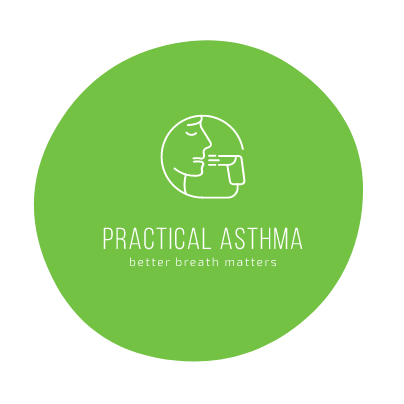Title: Effect of Psychological Stress on Airway Impedance in Individuals with Asthma and Panic Disorder
Author: Carr, R. E.; Lehrer, P. M.; Hochron, S. M.; Jackson, A.; (Date: Feb, 1996)
Journal: J Abnorm Psychol; V. 105; Issue: 1; Pages: 137-41
Abstract: The authors assessed airway impedance responses to psychological stressors among 113 individuals: 61 with asthma only (AS), 10 with asthma and panic disorder (ASPD), 24 with panic disorder only (PD), and 18 controls with neither condition (CON). Individuals with either AS or PD were affected by psychological stressors as measured by the forced oscillation technique. Individuals with PD (with or without AS) displayed lower airway impedance than those without PD. These data suggest that the airways of individuals with PD are in a chronic state of preparedness, which may promote hyperventilation.
Notes: Journal Article
Author Address: Department of Psychiatry, Robert Wood Johnson Medical School, University of Medicine and Dentistry of New Jersey, Piscataway 08854-5635, USA.
Title: Panic Disorder and Asthma: Causes, Effects and Research Implications
Author: Carr, R. E.; (Date: Jan, 1998)
Journal: J Psychosom Res; V. 44; Issue: 1; Pages: 43-52
Abstract: The presence of asthma is a risk factor for the development of panic disorder. The co-occurrence of panic disorder and asthma is greater than would be expected based on their individual prevalence rates. This may be due in part to the important role of respiratory factors in panic disorder. Panic and anxiety can directly exacerbate asthma symptoms through hyperventilation, and are associated with patients’ overuse of as-needed asthma medications, with more frequent hospital admission and longer hospital stays, and with more frequent steroid treatment, all of which are independent of degree of objective pulmonary impairment. The study of panic disorder among asthmatics can contribute to improved medical outcome for this subgroup, while also improving our understanding of the biological and psychological etiology of panic. This article will review the literature on this relationship by examining how panic disorder and panic symptoms affect the course of asthma, how asthma affects the symptoms and physiology of panic disorder, and the consequent research implications of this relationship.
Notes: Journal Article
Review
Review, Tutorial
Author Address: Department of Psychiatry, University of Medicine and Dentistry of New Jersey, Robert Wood Johnson Medical School, Piscataway 08854-5635, USA.
Title: The Impact of a New Emotional Self-Management Program on Stress, Emotions, Heart Rate Variability, Dhea and Cortisol
Author: McCraty, R.; Barrios-Choplin, B.; Rozman, D.; Atkinson, M.; Watkins, A. D.; (Date: Apr-Jun, 1998)
Journal: Integr Physiol Behav Sci; V. 33; Issue: 2; Pages: 151-70
Abstract: This study examined the effects on healthy adults of a new emotional self-management program, consisting of two key techniques, “Cut-Thru” and the “Heart Lock-In.” These techniques are designed to eliminate negative thought loops and promote sustained positive emotional states. The hypotheses were that training and practice in these techniques would yield lowered levels of stress and negative emotion and cortisol, while resulting in increased positive emotion and DHEA levels over a one-month period. In addition, we hypothesized that increased coherence in heart rate variability patterns would be observed during the practice of the techniques. Forty-five healthy adults participated in the study, fifteen of whom acted as a comparison group for the psychological measures. Salivary DHEA/DHEAS and cortisol levels were measured, autonomic nervous system function was assessed by heart rate variability analysis, and emotions were measured using a psychological questionnaire. Individuals in the experimental group were assessed before and four weeks after receiving training in the self-management techniques. The experimental group experienced significant increases in the positive affect scales of Caring and Vigor and significant decreases in the negative affect scales of Guilt, Hostility, Burnout, Anxiety and Stress Effects, while no significant changes were seen in the comparison group. There was a mean 23 percent reduction in cortisol and a 100 percent increase in DHEA/DHEAS in the experimental group. DHEA was significantly and positively related to the affective state Warmheartedness, whereas cortisol was significantly and positively related to Stress Effects. Increased coherence in heart rate variability patterns was measured in 80 percent of the experimental group during the use of the techniques. The results suggest that techniques designed to eliminate negative thought loops can have important positive effects on stress, emotions and key physiological systems. The implications are that relatively inexpensive interventions may dramatically and positively impact individuals’ health and well-being. Thus, individuals may have greater control over their minds, bodies and health than previously suspected.
Notes: Clinical Trial
Journal Article
Author Address: Institute of HeartMath, Boulder Creek, California 95006, USA.
